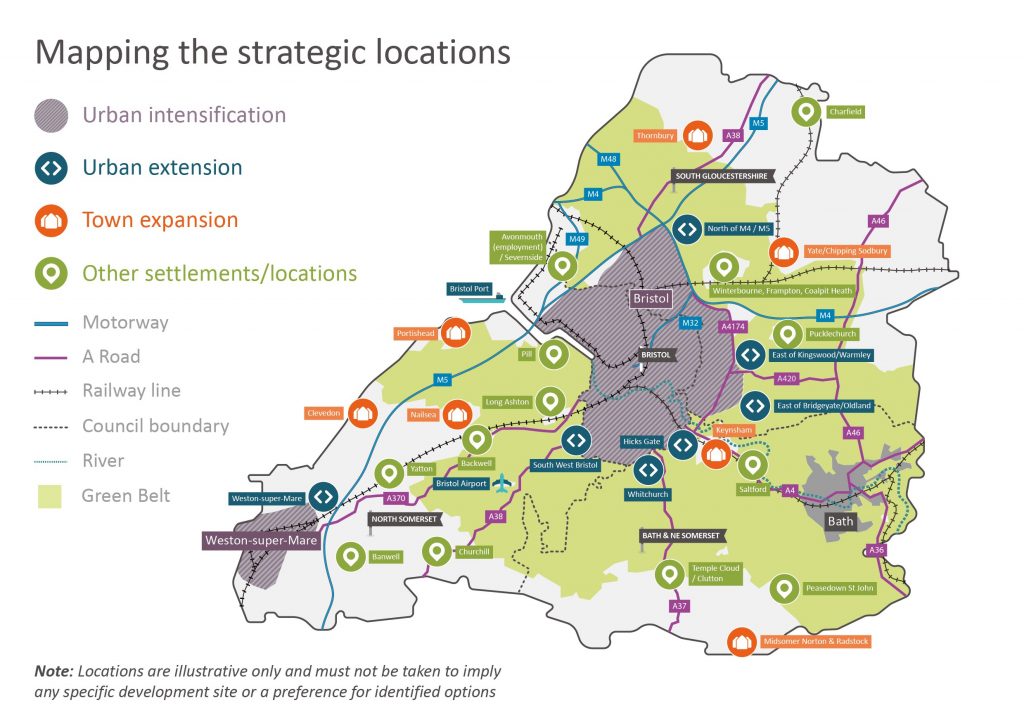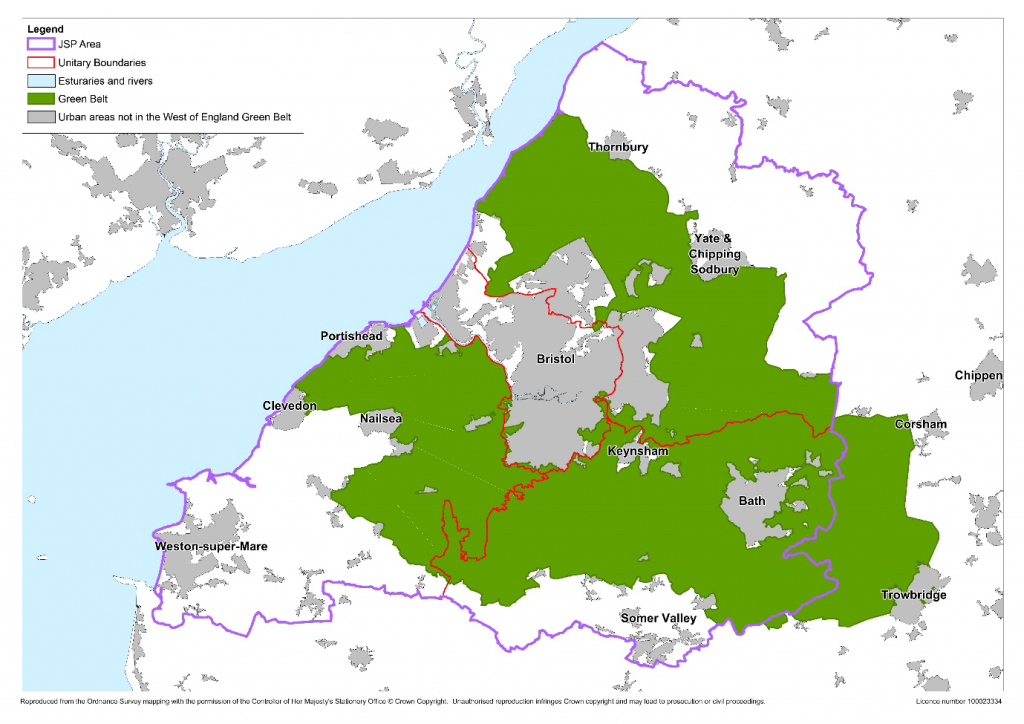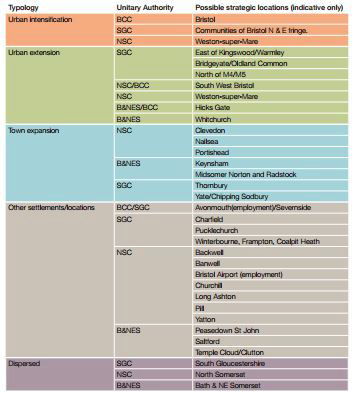The West of England’s four local authorities (BANES, Bristol, North Somerset and South Gloucester) have been developing a joint transport strategy to match and meet the plans for the projected growth in housing and employment between now and 2036.

The spatial plan sets out the strategy for building 85,000 new homes within the 4 counties, with a focus on affordability, practicality and environmental neutrality.
The main concentration of homes will be focused in Bristol and the surrounding areas, with an emphasis on keeping the green belt and “making more intelligent use of the environment to secure better economic and social outcomes, rather than just considering the environment as a development constraint.”
The proposed plans for housing infrastructure look to put a strong emphasis on a more intellectual approach to environmental sustainability and integration that is strongly appreciated by Transition Bath.
There is already planning for 56,000 new homes, with a need identified for a further 29,000, and a view to look at brownfield, currently urbanised locations.

The plan has grouped strategic areas for housing development as follows:
- Urban intensification: opportunities to deliver additional development within urban areas. This will be over and above what is currently planned and forecast to be delivered.
- Urban extension: planned expansion of the urban area into adjacent countryside.
- Town expansion: planned expansion of existing towns detached from the existing urban areas.
- New settlement: there are no current proposals for new towns.
- Other settlements/locations: covers a range of generally smaller-scale opportunities such as village expansion or clusters of sites, which together could form a strategic option. This could include options which are wholly or predominantly employment focused.
- Dispersed growth: an aggregate of very small-scale opportunities, perhaps across a number of villages.
Possible strategic locations for growth have been outlined in the figure below.

There can be no denying that with an ever growing, ageing population, the need for providing affordable and environmentally friendly development is important. The spatial plan needs to reflect the needs for those it will service, and there is an effort and inclination within the plan to meet these targets.
Key to the success will be the proposed joint transport plan (JTP). The councils are working together to develop a strategy that will enable them to provide good transport links to new, and existing, urban and rural areas. They have highlighted issues, such as over dependency on cars, existing congestion and poor or limited travel options. To help alleviate these problems several solutions have been proffered, from looking to metro-west to extending bus networks (JTP Transport Solutions). However, at the core of all projected growth is the need for economic resilience and prosperity. The consequence of which can often lead to the environmental and long-term sustainability plans playing second fiddle to the need to be financially lucrative. In order to help maintain a focus on the sustainable transport strategy, Transition Bath has recommended the following during the consultation:
- There needs to be a strong emphasis on suitable integrated transport options, that are tailored to the needs of those that are being serviced.
- A reduction in car dependency is essential in improving environmental sustainability as we look to grow population density in urban areas, as well as satellite or commuter towns.
- Inner city growth needs to be matched by an increased presence of cycle lanes, bus routes and a stronger emphasis on integrated initiatives such as cycle racks on buses or encouraging the use of bike and rail.
- Growth in commuter towns needs to be on already well-serviced public transport routes, or money needs to be invested to make these a viable option to reduce car dependency.
- Bike and rail, or Park and cycle initiatives, backed up with strong marketing support and awareness raising of the availability and ease of using such options, must be encouraged.
- Working closely with employers to encourage cycle to work schemes can also have a positive influence on a change in transport attitude.
- Integrating public transport schemes across BANES, North Somerset, South Gloucester and Bristol will help to provide more robust transport infrastructure, accessibility and affordability.
- Developments are built where new bus-only routes could be incorporated, which would not only serve the development’s residents but also cut congested roads out of bus routes, making buses quicker than cars.
- Enhancing roads to maximise the space for cyclists and pedestrians for both inner city and urban areas. Too often wide roads leave much space that is not used for cycle lanes or bus lanes.
- An objective to ensure that we are not just promoting a natural environment, but taking measures to safe guard what we already have.
Whilst the initial consultation has now closed, it is important that when the results are announced or when the next round of consultations begin, that people make their voices are heard to ensure that the environmental needs of the West of England continue to be at the forefront of housing development and transport strategy.